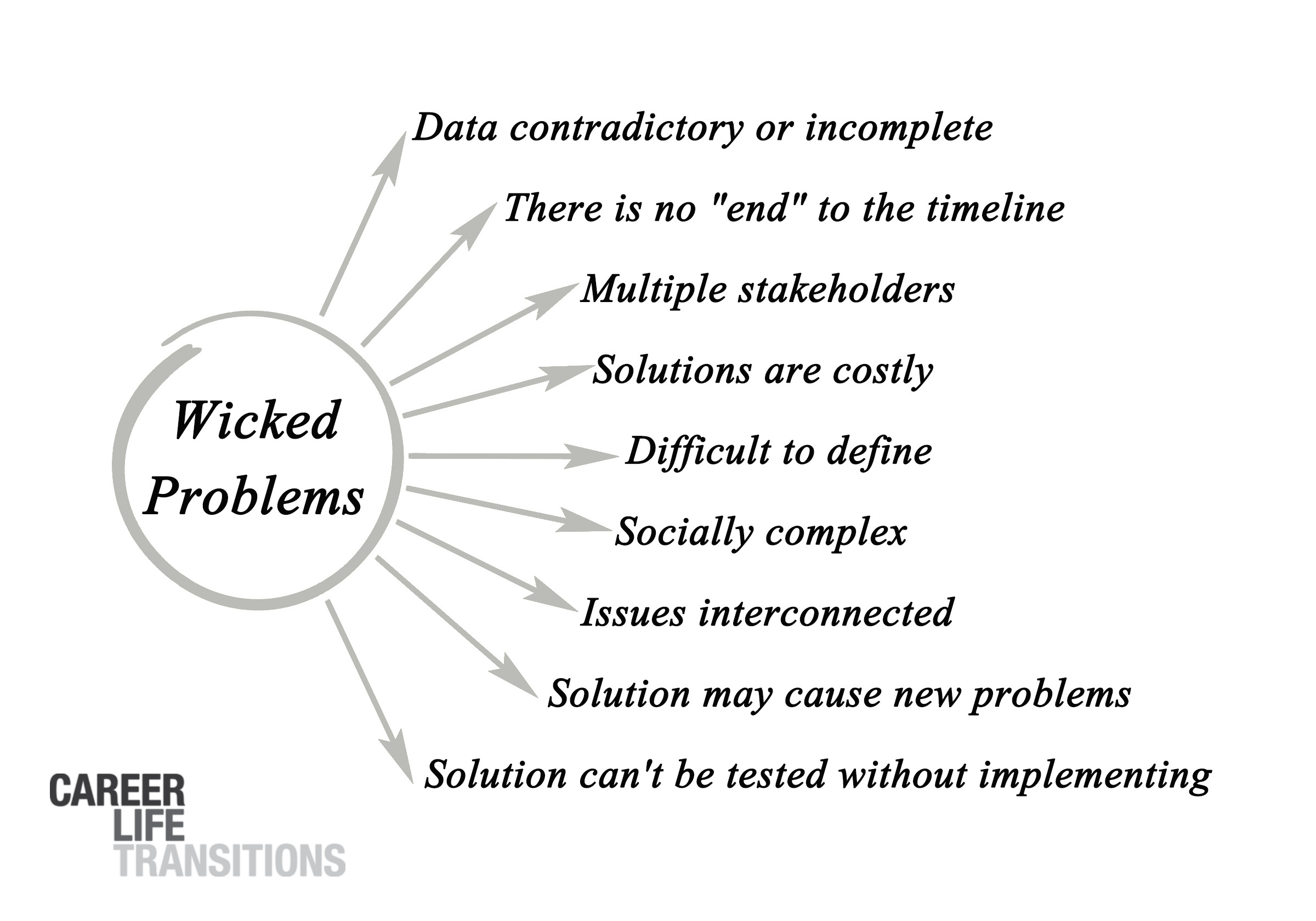According to Wikipedia, “a wicked problem is a problem that is difficult or impossible to solve because of incomplete, contradictory and changing requirements that are often difficult to recognize.”
When we look at the challenge of the ageing workforce, there are a number of factors that immediately come into play, these factors are intertwined and make the discussion very complex.
So, what are the big ones?
- People don’t know how long they’re going to live for.
- Employers are no longer able to mandate retirement.
- Employees don’t know how much money is enough to enjoy their retirement.
- People don’t know what they’ll do in their active retirement if they are not working.
- Employers have an ageing workforce that is holding up bringing in younger people.
- People don’t understand the constantly shifting rules around pensions and superannuation.
- Everyone talks about ‘ageism’ but everyone is looking at it from their own view point.
- Our communities are more disconnected than ever – people are lonely.
- Employers need to consider the safety cost of the ageing workforce.
- Many Employers have inflexible work expectations (9 to 5, 5 days a week)
- Employers are concerned or totally unconcerned (until it’s too late) about loss of intellectual property or intellectual input in business.
- There is a “Let’s wait and see” and “Let’s leave it until it becomes someone else’s problem” attitude.
Some of these items have roots in a lack of understanding or information, are based on assumption, or are totally at odds with each other.
Like any ‘wicked’ issue, it is the range of complexities which makes a solution very illusive. The other day I heard an interesting presentation which debunked the standard problem-solving model, and I now believe this is one of the key reasons that we have not progressed the Ageing workforce issue well.
What are the alternate solutions to a flawed Problem Solving model?
| Phase | Failure Point |
Alternative |
| 1. Define the problem | We mix facts and opinions and are not very good at root cause analysis, especially when it’s a ‘wicked’ problem. | Implement a solid root cause analysis and fact-finding approach to ensure that we have evidential information. |
| 2. Generate possible solutions | We try and be innovative, but we usually only present solutions that fit into our current framework or mindset, which are rarely innovative. | Open up the discussion to a broader range of stakeholders and solicit a broad range of ideas, even the “crazy” one’s. |
| 3. Evaluate alternatives and select a solution | Company politics and personal agendas get in the way of truly independently evaluating solid alternatives, (especially those generated based on the previous premise). Group Think kicks in, as well as all the other mental models that restrict rather than expand us. | Align goals with facts and desired outcomes. Set success criteria and involve stakeholders, look at what will disrupt the current system, not only at what will align or support it. |
| 4. Implement and review | We are terrible at implementing change in organsitions (statistically 70 to 80% of change initiatives fail) and the more the solution is outside the existing framework, processes and policies of the organisation, the less likely a creative and innovative approach is going to be successfully introduced and rolled out. | Allocate resources, obtain high level involvement, set achievable goals and objectives – make it a disruptor. |
Therefore, if we are going to resolve this issue, we need a new way of thinking about it, it needs a unified, systematic approach supported by the resources to create alternatives and successfully implement a solution.
There is no sign of anyone taking the lead on this in the short term.
However, for any organisation it is possible to address the ageing workforce issues in-house.
Here are our 7 steps:
- Do the research and gather your own facts, most companies have no idea about their ageing workforce – intentions, age spread, retirement plans, safety costs etc.
- Start the conversation with the ageing workforce – it has been closed down over the last few years.
- Open your mind to alternatives and possibilities – 18 months ago no one thought the bulk of the workforce could work from home, but look at us now.
- Review policies and procedures that restrict viable solutions.
- Take a community approach rather than an organisational approach, after all – an organisation is an important part of the broader community.
- Appreciate the contribution people have made and take steps to retain their knowledge.
- Transition people out of the business with the same effort and respect they were shown when they arrived.
For more information on the Ageing workforce and how you can implement these strategies in your organisation contact us on info@careerlife.net.au or (08) 6336 8620.














Dr Susan Roberts says: